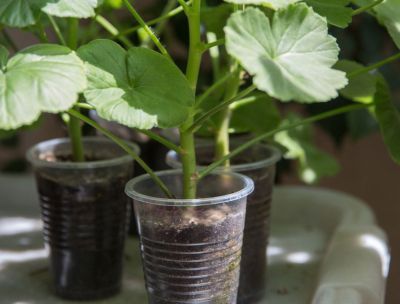Follow this article for tips on sowing geranium seeds.
When to Plant Geranium Seeds
With their brilliant red (sometimes pink, orange, purple, and white) blooms, geraniums add major impact to garden beds and baskets. The seed-grown varieties are usually smaller and have more flowers than those propagated by cuttings. They also tend to have more disease resistance and heat tolerance. Geraniums grow readily from seed. However, to grow geranium from seed, you need to be patient. From seed to flower can take up to 16 weeks. Germinating seeds requires a photoperiod and heat, but the most important thing if you want summer bedding plants is knowing when to sow. Most experts recommend January to February. Plant seeds indoors in most regions, unless you live where winters are warm and sunny. In these regions, gardeners can try direct sowing geranium seeds in a prepared bed.
How to Grow Geranium from Seed
Use seed starting mix when germinating geranium seeds. You may also use a soilless mix which can help prevent damping off fungus. Disinfect previously used flats prior to planting to prevent spreading diseases. Fill trays with a moistened medium. Sow seeds evenly and then add a dusting of medium over them. Cover the flat or tray with plastic wrap or a clear plastic dome. Place in bright light. Geranium seed propagation requires temperatures of at least 72 F. (22 C.) but no higher than 78 F. (26 C.) where germination can become inhibited. Remove the plastic cover daily to allow excess moisture to escape. Once you see two sets of true leaves on seedlings, move them to larger containers to grow in. Plant seedlings with cotyledons under the soil. Place plants under fluorescent lights or in a very bright location. Ideally, geraniums should have 10-12 hours of light per day. Water plants when the surface of the soil is dry to the touch. Fertilize weekly with houseplant food that has been diluted by 1/4. Harden plants off for seven days before planting them out and then wait patiently for a host of blooms.
